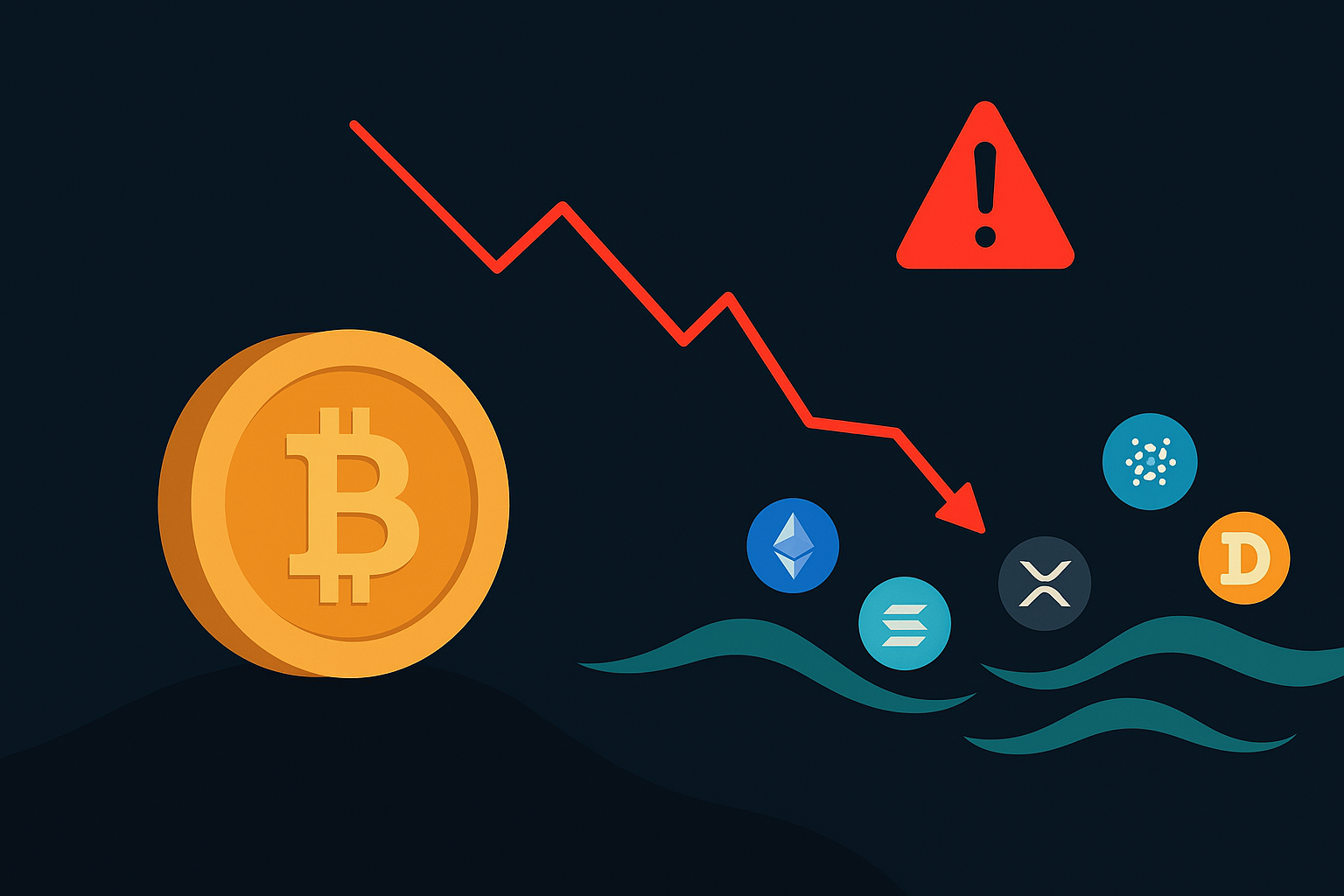Reason to trust
Strict editorial policy that focuses on accuracy, relevance, and impartiality
Created by industry experts and meticulously reviewed
The highest standards in reporting and publishing
Strict editorial policy that focuses on accuracy, relevance, and impartiality
Morbi pretium leo et nisl aliquam mollis. Quisque arcu lorem, ultricies quis pellentesque nec, ullamcorper eu odio.
Crypto analyst Maartunn (@JA_Maartun) warned on September 14 that a familiar—and historically unfriendly—market pattern has reappeared: speculative leverage pouring into altcoins while Bitcoin’s derivatives positioning stays conspicuously muted. “History doesn’t repeat, but it often rhymes, and right now a major warning signal is flashing,” he said, stressing that his message is not to incite panic but to flag a shift in market climate that “any smart investor” should not ignore.
At the core of Maartunn’s diagnosis is open interest, the notional value of active futures and perpetual positions across venues. “We keep throwing around this term, open interest. What is it? Well, to put it simply, it’s a way to measure the total amount of money and active bets in the market. When open interest rises, it means new money, often speculative money, is coming in,” he explained.
Crypto’s ‘Musical Chairs’ Moment
In his read, altcoin open interest is “through the roof,” while Bitcoin—“the anchor of the whole market”—is flat. The divergence, he argued, is precisely what preceded the late-2024 drawdown. “Altcoin speculation is heating up — the gap between BTC and Altcoin Open Interest just hit a new high,” Maartuun wrote via X.
Bitcoin vs altcoin open interest | Source: X @JA_Maartun
Maartunn anchored his warning in a recent analogue. “Back in December of 2024, the exact same story played out. Altcoin speculation was running wild, while Bitcoin was just stagnating. And the result? It wasn’t pretty.” The immediate aftermath, he recalled, was a sharp, broad-based markdown and then a tedious consolidation.
Related Reading
“We’re talking [about] a 30% drop,” he said of Bitcoin’s move, adding that such declines “don’t happen in a vacuum.” Liquidity retreats to safety, correlations rise, and “those high-flying, speculative altcoins… get hit the hardest.” What followed was “three whole months” of rangebound “chop modus,” a period that historically bleeds momentum strategies and punishes late-cycle leverage.
To illustrate how leverage-heavy phases can abruptly unravel, he leaned on a metaphor. “It’s a high-stakes game of musical chairs,” he said. As long as flows are positive, “the party’s in full swing, and everyone feels like a genius.” The structural risk emerges at the moment “the music stops”—an adverse headline, an exogenous macro shock, or simply fatigued bid depth.
“Everyone makes a mad dash for a chair, for safety. But in a panic, there just aren’t enough chairs for everybody, and someone always gets left holding the bag.” In crypto’s derivatives-driven microstructure, that dash translates into forceful de-risking and liquidations that can cascade across thin order books.
Related Reading
Crucially, Maartunn framed his assessment as situational risk—not a deterministic crash call. “This isn’t about predicting a crash or trying to cause a panic, not at all,” he said at the outset. The point, rather, is to recognize that the “growing split in the market” between exuberant altcoin leverage and a subdued Bitcoin base “can’t last forever.” “The level of risk in the market has clearly gone up,” he concluded. “The music is absolutely still playing, but it’s probably a good time to know where the emergency exits are.”
The open question is the one he leaves viewers with: whether this is merely “the market… enjoying the music before another painful dip,” as in December 2024, or whether “this time really [is] different.” In either case, Maartunn’s thesis hinges on the same observable setup: a momentum-chasing build-up of altcoin derivatives exposure with no confirming expansion in Bitcoin’s positioning. If the past is a guide, the divergence is less a timing tool than a warning label on the current phase of the cycle—one that tends to end not when everyone expects it, but when liquidity blinks.
At press time, the total crypto market cap stood $4.0 trillion.
Total crypto market cap surpasses $4 trillion, 1-week chart | Source: TOTAL on TradingView.com
Featured image created with DALL.E, chart from TradingView.com


